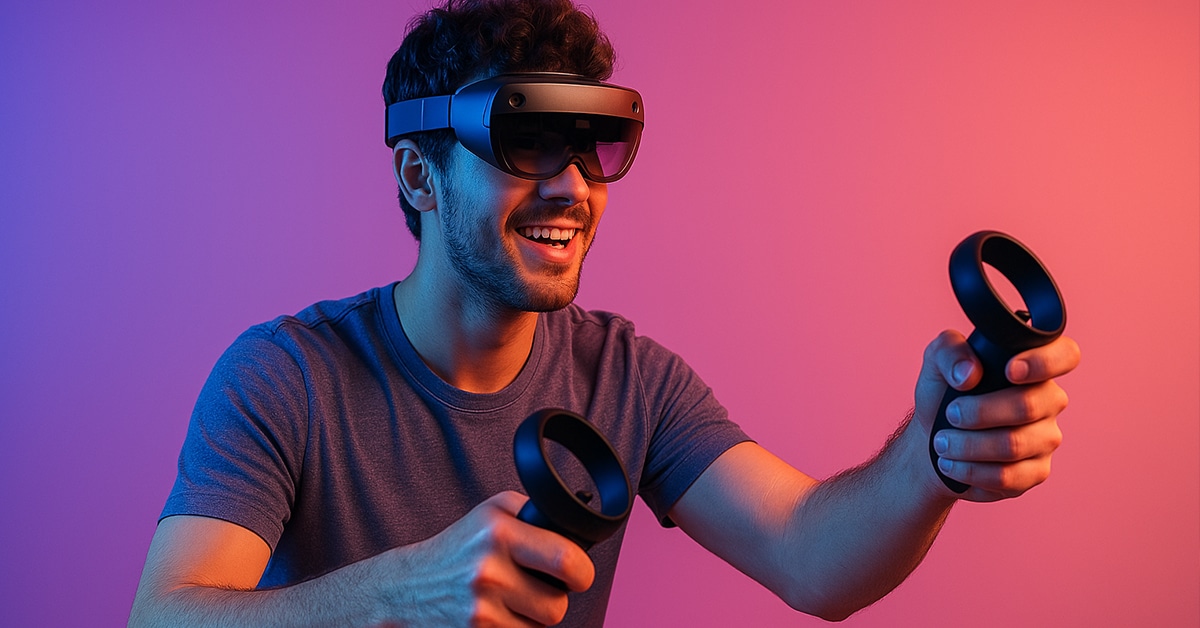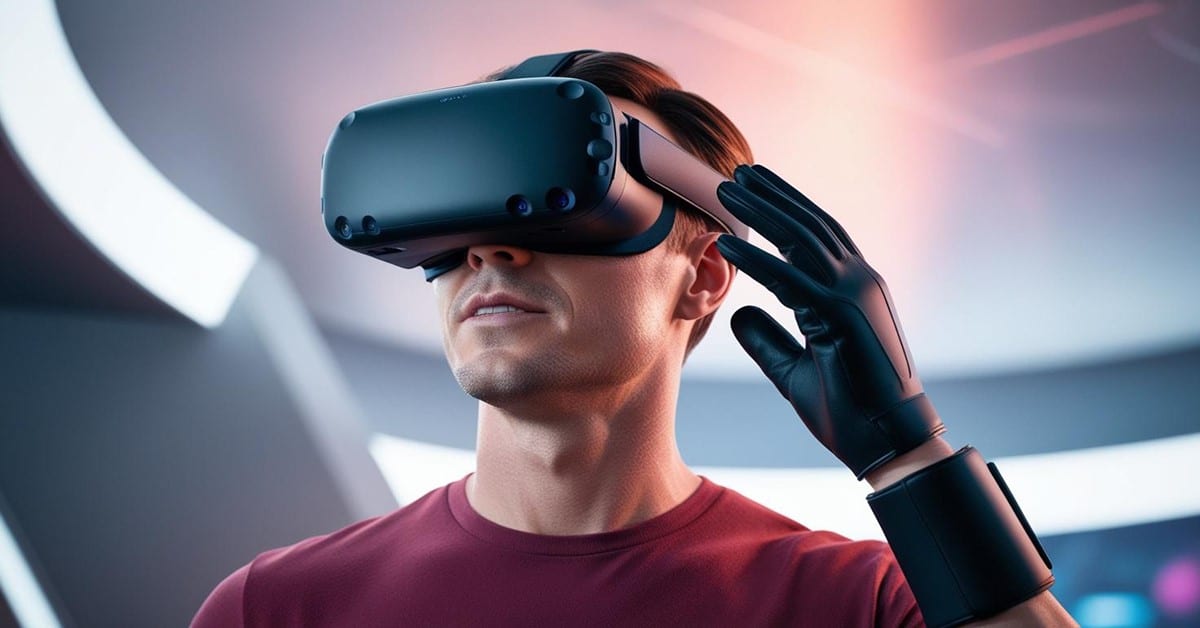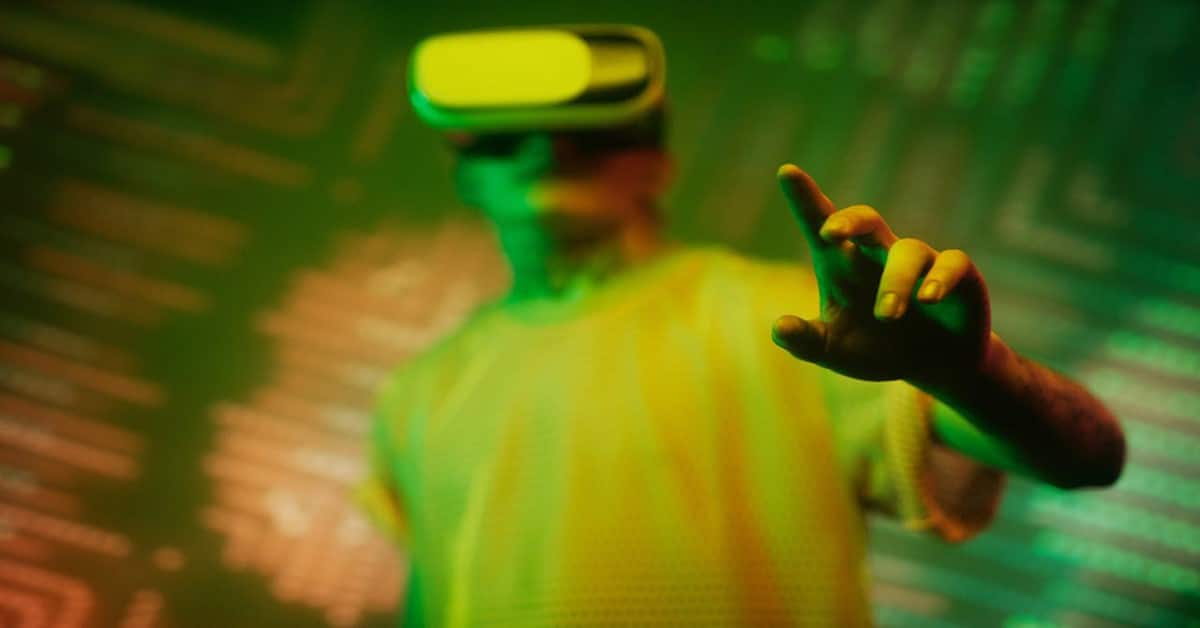Metaverse avatar options are one of the best parts of the metaverse experience. A metaverse avatar gives you the ability to look however you want in any environment. You’re not constrained by weather, territory, or any aspect of physicality. You can look however you want and sample fashion or athletic gear. You’ll soon see exactly how to work with avatars.
Quick Menu:
- The Metaverse and Options for a Metaverse Avatar
- What Is a Metaverse Avatar?
- How Significant Are Avatars in the Metaverse?
- Current Use of Metaverse Avatar NFTs
- What Are the Different Types of Metaverse Avatars?
- What Are Features of Metaverse Avatars?
- The Future for Metaverse Avatars
- How to Create a Metaverse Avatar?
- What Are Some Metaverse Avatar Apps?
- What Are Some Metaverse Avatars Around Different Virtual Worlds?
- The Proteus Effect and Its Relevance to the Future of Avatars
- Customizing Metaverse Avatar Choices With Name Brands
- How Companies Impact Metaverse Avatar Options
- The Influence of Web 3.0 on a Metaverse Avatar
The Metaverse and Options for a Metaverse Avatar
Avatars are one of the most entertaining parts of the metaverse. But just what is the metaverse itself? You can think of it as a collaboration or merger between the standard analog world and a 3D digital world. This digital domain is essentially borderless, interactive, and fully immersive. It’s a 3D realm where you could walk forever without reaching an endpoint.
The metaverse is filled with land to explore and even people, represented as avatars, to meet. You can invite friends into the metaverse with you. Or you can even meet people from all over the world. And you can do so with a fully immersive virtual reality (VR) set, augmented reality (AR) gear, or even smartphones and game consoles. AR and VR are the best way to explore the metaverse as they’re fully immersive.
These new technologies highlight the fact that the metaverse is still experimental. It’s constantly growing and changing. Nobody knows precisely how the metaverse will turn out. But its emergent properties mean that every addition to the metaverse can result in unique and unexpected wonders. You can find out how to explore the metaverse in “Metaverse Guide; Understanding The Basics Will Open Up a New World”.
What Is a Metaverse Avatar?
Because the metaverse is both a 3D and social environment, you need to represent yourself to others. This is the metaverse avatar. The metaverse avatar is essentially a manifestation of a user within the metaverse. The avatar can look like almost anything you can imagine. It might look exactly like you do in the real world. Or your avatar might look different.
One of the reasons why a metaverse avatar guide is so essential is that different companies have different implementations of the avatar system. For example, some companies use a system where avatars are essentially just a head and torso floating around in a reasonably simplistic form. Other companies use photorealistic avatars that are almost lifelike. Even facial expressions or body language might be supported within a metaverse avatar system. Getting the most out of an avatar means knowing which options are available.
How Significant Are Avatars in the Metaverse?
A metaverse avatar is one of the most critical pieces of that virtual world. The metaverse is filled with options for user interaction. This ranges from buying items from vendors, exploring new areas, or even admiring the NFTs in an art gallery. And, of course, social elements are a core part of the metaverse. And all of this requires avatars.
Avatars also serve as a unique element within the larger metaverse. You can even categorize avatars as metaverse avatar NFTs. And avatars become even more remarkable by using actual NFTs with them. This is further aided by the fact that you can buy NFTs from major brands. You can create avatars that recreate high fashion and concepts right out of science-fiction or fantasy. People use them for fun, socialization, and even work. And technology often makes it easy to add expression with microphone lip-sync and similar ideas.
Current Use of Metaverse Avatar NFTs
Much of the metaverse is built on top of the blockchain. This is the technology that makes things like cryptocurrency possible. It allows for digital data to verify itself as unique. And this is what powers the metaverse avatar NFT.
NFTs are often used to show involvement in the metaverse, accomplishments in finance or collecting, and a myriad of other traits. It helps people recognize shared interests among each other by just glancing at an avatar. People who work with any NFT system, especially a metaverse avatar NFT, all have something in common. They’re dedicated to digital art.
What Are the Different Types of Metaverse Avatars?
You’ve seen that there’s a lot of variation in different metaverse avatar systems. This is part of why a metaverse avatar guide is so important. Every metaverse avatar shares some core characteristics. But there’s a great deal of variety that can be built on top of the metaverse’s foundation. The following avatar types are the most common selections within different metaverse implementations.
2D Avatars
2D avatars were the first examples of a metaverse avatar. They’re essentially a flat representation of the user. 2D avatars are usually used within 2D environments. It’s essentially a picture or pixel-based representation of someone. This is similar to the player representations found in older 8 or 16-bit video games.
3D Avatars
With the exponential development of modern technology came dramatic changes to avatars. 2D gave rise to a full 3D expression for users. This typically provides a fully humanoid form that can be viewed from multiple angles. This includes elements like hair and skin tone. And it can appear quite lifelike.
VR Avatars
VR avatars are a type of 3D avatar. These metaverse avatar forms are unique in that the user typically doesn’t see them. Users instead look out from the avatar’s perspective from a first-person view. VR avatars typically lack most limbs to make it easier for older systems to render properly.
Leg-less VR Avatars
This type of metaverse avatar is a type of 3D avatar similar to a VR avatar. Some metaverse systems don’t render a user’s legs as a VR avatar. This is done to reduce system requirements, reduce height issues, and account for any lack of leg sensors on VR systems.
Full Body Avatars
This is the most advanced metaverse avatar. It uses sensors to recreate the user’s entire body in the metaverse fully. This provides a full range of movement and makes it easy to interact with digital assets. Advanced VR games typically use this system, and it’s thought Facebook’s metaverse will too.
What Are Features of Metaverse Avatars?
This metaverse avatar guide has looked at avatars in terms of presentation. But what about the fundamental nature of an avatar? What actual features set them apart from each other? And what can you do with an avatar to make it uniquely your own?
Flexibility
Flexibility refers to the fact that a metaverse avatar usually isn’t constrained within a single environment. A metaverse avatar is flexible enough to be leveraged within many different types of metaverses. This means that you can often move an avatar along with you as you try the various companies’ metaverse implementations.
This is especially true for Metaverse avatar NFT systems tied to the blockchain. The unique elements that make it an NFT are usually compatible with any metaverse instance. This is because the blockchain allows for special items. Different metaverses recognize individual elements.
Customizability
A metaverse avatar can be customized in almost any way you can imagine. Different metaverse platforms require different design methodologies. But one inherent part of avatars is that they can be changed to fit your aesthetic. Your skin tone, height, hair, and almost anything else can be changed. And you can do so at any point you desire.
On top of that, the Metaverse avatar NFT component means you can often purchase unique apparel for your avatar. Many of the most famous brands from the real world offer clothing and accessories in the metaverse in the form of NFTs.
Monetary Value
The metaverse avatar guide has shown how often NFTs and avatars cross paths. And there’s a total economy around avatars that give them a true monetary value. The metaverse economy is increasingly avatar-centric. Digital goods are a fast-selling and valuable commodity in the metaverse.
Big brands such as Gucci are offering several metaverse exclusives. A virtual Gucci bag recently sold for $4,000 on Roblox.All of this comes down to uniqueness and scarcity within the metaverse. Thanks to the blockchain, your avatar, and its various associated items are unique. Your avatar is itself an economic node of sorts.
The Future for Metaverse Avatars
The future has some fantastic things in store for the metaverse avatar implementations. It’s not just that it’s becoming more accessible than ever to create your avatar. It’s also becoming more profitable to do so. Many people use avatars in their roles as entertainers and social media influencers.
This is sure to keep growing in popularity. On top of this, it’s essential to keep the metaverse avatar NFT concept in mind. When you create an avatar, you own it. You can maintain control and financial ownership of an avatar even while using it to make money with commercial interests.
How to Create a Metaverse Avatar?
You probably have a good idea of what you’d like your metaverse avatar to look like. But most people aren’t sure about the best way to make that idea a reality. There are quite a few systems that help you create avatars. There are apps designed for the sole purpose of creating and hosting your avatar, however, you can also create avatars within certain metaverse virtual worlds.
Each way is different, but most offer a helping hand. This typically involves simple questions like gender. Many even let you upload a photo and automatically customize the avatar to fit it. But you can further customize it through the unique elements present in each tool before entering the metaverse.
What Are Some Metaverse Avatar Apps?
There are far too many apps for any single metaverse avatar guide to examine. But you’ll soon get a look at the absolute best of the best. These apps will help you create a metaverse avatar that fits your unique needs and the environments you’d like to explore.
Zepeto
This metaverse avatar creation tool makes it easy to replicate your facial features. Zepeto gives you the option of changing your face, eyes, and even hairstyle. Users can recreate their own facial features or feel what it’s like to be a totally different person. The app also provides you with a wide range of fashion options. Many of the options are free for anyone to use. But the app also has some unique features and selections that are available for an extra fee. One nice extra is that exporting avatars to metaverse or social networks is easy.
Video: Welcome to ZEPETO
Genies
Genies is a metaverse avatar app currently in beta with a lot of celebrity recognition. Stars like Rihanna and Justin Bieber have used it to create avatars. This has earned it the nickname “avatars for the stars”. Genies paired up with Dapper Labs to offer digital accessories related to major brands such as the NBA. Users can create avatars with a variety of accessories such as masks or shoes. The price of these items is generally less than $20 for the immediate sale. But it’s common for NFTs to have later resale value far beyond the initial price.
Video: Genies: Cloning Humans
IMVU
IMVU takes users into a 3D VR realm highly focused on games. But it’s not just about gaming. Users can create chat rooms and even join clubs; the IMVU world is immense and beautiful. It’s an immersive environment that’s fun to explore. And there’s also a solid in-game economy that uses AP credits. Part of this economy centers around buying and selling virtual items such as clothing. Artists can create digital assets in Cal3D for sale within or outside the system. These items can then be used to deck out a metaverse avatar in the latest metaverse fashion trends.
Video: IMVU: Where Real Life Comes to Play
OSUVOX
OSUVOX was one of the first metaverse implementations that focused on metaverse avatar interoperability. This is implemented through a metaverse avatar NFT system. Each of its metaverse avatar implementations provides an OSUVOX, and every OSUVOX holder has 1 of 10,000 images associated with it. This creates a unique base to build upon. The system’s OSUVOX portal provides users with even more freedom to modify the appearance of their metaverse avatar. The resulting avatar can be easily used on many other systems. And if a user creates something exciting, then the avatar can be sold on OpenSea as an NFT.
Image attribution: OSUVOX
Ready Player Me
Ready Player Me provides a metaverse avatar system that stresses ease of use. You can use a selfie as a base for avatar creation. This makes the creation among the easiest within this metaverse avatar guide. Ready Player Me is also easy for developers to use. It provides a free avatar SDK that simplifies making apps and games compatible with Ready Player Me avatars. This has resulted in over 1,000 apps, games, and programs consistent with Ready Player Me avatars. This is further aided by the fact that the SDK is compatible with Unity and Unreal Engine.
Video: Make a VRChat avatar from a photo with Ready Player Me
What Are Some Metaverse Avatars Around Different Virtual Worlds?
The metaverse avatar guide has looked at ways to create a metaverse avatar. But how are different implementations of the metaverse handling avatar used? There’s a vast number of metaverse implementations. But the following are considered some of the best virtual worlds with sold support for avatars.
Meta
Meta uses an advanced photorealistic metaverse avatar system. It’s continually offering upgrades and new features; the latest, a new Quest avatar system, brought extra customization options and expressiveness. The new system is also being standardized across several different platforms. The supported platforms are Facebook, Instagram, and Messenger. This lets people use a shared 3D avatar across VR and social media. Meta’s rapid deployment and commitment to the metaverse make it one of the most important companies to follow.
Video: Social Avatars in Meta’s Metaverse
Microsoft
Microsoft’s work with their metaverse avatar system is also concurrent over multiple platforms. They’re leveraging a 3D avatar system that won’t require VR headsets. The end effect is 3D avatars that can be used in both 3D and 2D environments. The company is also merging AI technologies with its avatars. The AI listens for your voice and animates the avatar accordingly. Much of Microsoft’s push for avatars and the metaverse centers around business use with Teams and Mesh.
Image attribution: Microsoft
Roblox
Roblox first introduced their avatars as “robloxians”. The current metaverse avatar system offers two options. The first is R15 and is the easily recognizable blocky, humanoid, form. A new option called Rthro provides a more realistically human shape. Like the Roblox environment itself, the system’s avatars are heavily customizable. Users can put everything from tools to pants, shirts, and accessories onto their avatars. And the avatars can be moved around all of the games in Roblox.
For more information about Roblox, read “Roblox Games; The Top 10 You Should Start Playing Today”.
Video: Roblox – About Us
Sandbox
Sandbox offers a metaverse avatar implementation that takes the form of blocky humanoid shapes. Sandbox’s Game Maker application typically creates these avatars. Users can choose from a wide variety of options when doing so. This includes cosmetic options such as skin tone or body parts. And there are also special items available for purchase in the marketplace.
On top of cosmetic traits, avatars also have specific elements which operate as game mechanics. These include stats like Luck, Speed, and Defence. Different items can raise or lower any of these traits when equipped with the avatar.
For more information about the Sandbox Game, read “Sandbox Game; An Overview of a Groundbreaking Virtual World”.
Video: Customizing Your Sandbox Avatar
Decentraland
Decentraland is a rare example of a 3D virtual world that doesn’t require an avatar. Users can simply log in as a guest. But if users do want an avatar, then they can take advantage of the vast options provided by the Decentraland metaverse avatar system. It offers choices for hair, face, body types, and many different clothing options. Decentraland also has a booming economy with lots of options for accessories. The market makes it easy to both buy and sell clothing or accessories.
For more information about Decentraland, read “Decentraland Guide; Overview, Components, Things To Do & More!”
Video: Decentraland Avatars
The Proteus Effect and Its Relevance to the Future of Avatars
The metaverse avatar guide has covered the mechanics of metaverse avatars. But what about the social effects? Experts refer to the influence of avatars on people’s behavior as the Proteus Effect.
The Proteus Effect is named after the ancient Greek god Proteus. Proteus could alter his form in any way he desired. A metaverse avatar is similarly mutable and quickly changed to match your desire or whim.
It’s thought that the Proteus Effect might increase people’s empathy. This is largely because it removes obstacles for inclusion within social groups. People can instantly look like they belong in any nation or social affiliation. Age, skin tone, and other visual cues can be changed on the fly. Another element of this effect is the ease of stepping into another person’s shoes to experience their life. You can even adopt their traits.
Customizing Metaverse Avatar Choices With Name Brands
The metaverse avatar guide has looked at several systems which give you the chance to buy items from established brands. There are quite a few companies that are setting up shop in the metaverse. The most common example is fashion brands. Luxury and athletic brands are moving into the metaverse; names such as Nike and Gucci can be found in the metaverse. Some of the brands even offer dual-purchase options between offline and online products. You can find everything you need to know about metaverse brands in the article “Top 12 Metaverse Brands Selling Their Products Digitally”.
How Companies Impact Metaverse Avatar Options
The metaverse avatar guide has looked at several companies’ take on the concept of a metaverse avatar. But there’s a lot more to the story. Metaverse-centered companies are essentially building the universe these avatars are embodied within. Each company working on the metaverse brings something unique and vital to the table.
By looking into how these companies operate, you can see the future they’re working toward. Different companies are adding elements related to gaming, socialization, and art. You can find a complete guide of the companies building the metaverse in the article “Metaverse Companies Building The Future: An Overview”.
The Influence of Web 3.0 on a Metaverse Avatar
Metaverse avatar creation and use aren’t just limited to the metaverse. Some of the systems examined in this metaverse avatar guide support social media and other web-based systems. This is often thanks to the technologies provided by Web 3.0, a system built on similar components as the metaverse such as the blockchain.
There’s a large amount of overlap between Web 3.0 and the metaverse. Some metaverse implementations are even accessible through a browser, thanks to Web 3.0’s various components. You can find a complete overview of Web 3.0 technologies in the article “Web 3.0 Guide; Clearly Explained With Examples”.
A metaverse avatar is one of the most critical parts of the digital realm. But it’s always important to remember that it’s also your own reflection. The avatar is a part of yourself that’s stepped into a different world.
Did You Like This Article About Metaverse Avatars?
You might also be interested in the following articles:
- Metaverse Startups: 10 Compelling Metaverse Startup Companies
- Roblox Games: The Top 10 You Should Start Playing Today
- NFT Art Guide: Meaning, Examples, Market Places, and How to Buy








Leave A Comment